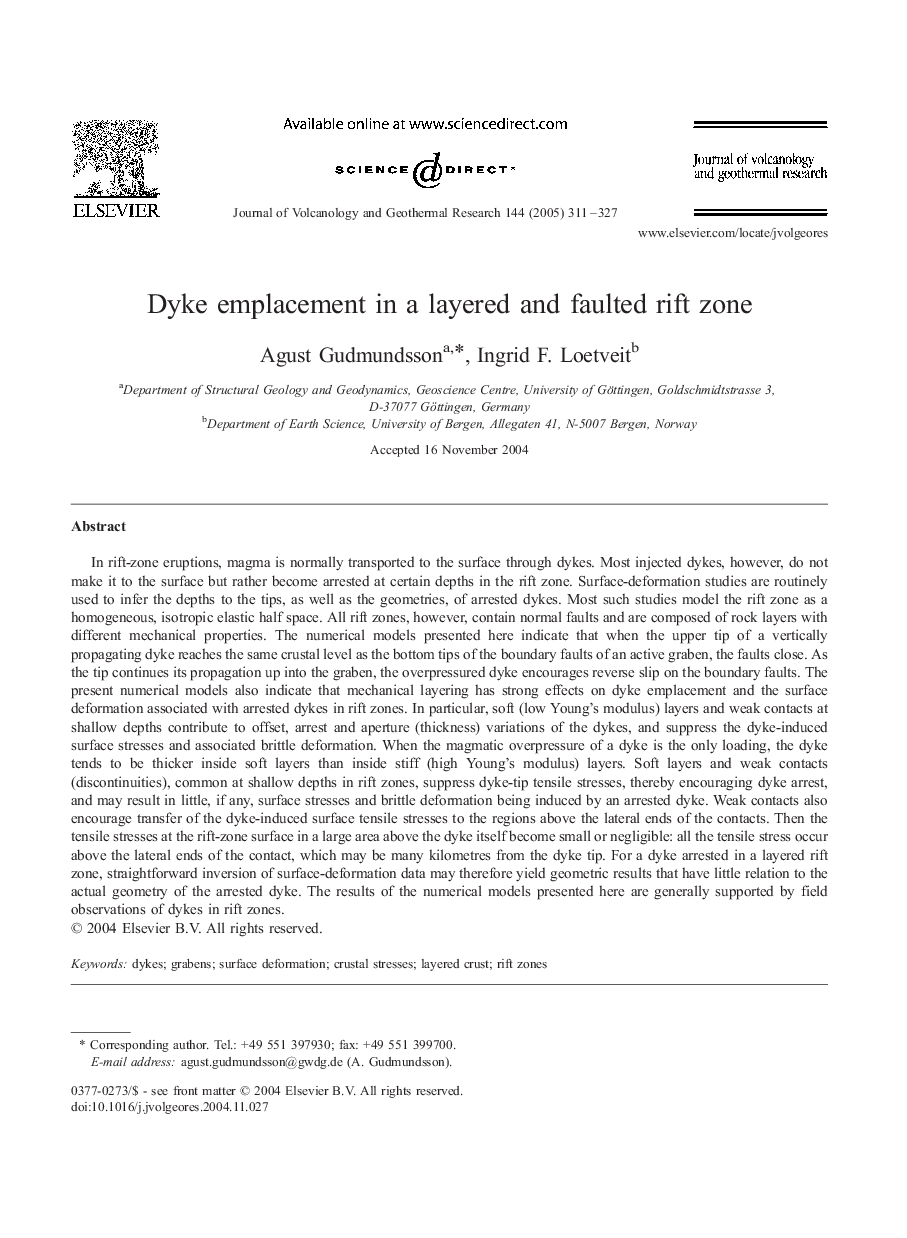| Article ID | Journal | Published Year | Pages | File Type |
|---|---|---|---|---|
| 9531132 | Journal of Volcanology and Geothermal Research | 2005 | 17 Pages |
Abstract
In rift-zone eruptions, magma is normally transported to the surface through dykes. Most injected dykes, however, do not make it to the surface but rather become arrested at certain depths in the rift zone. Surface-deformation studies are routinely used to infer the depths to the tips, as well as the geometries, of arrested dykes. Most such studies model the rift zone as a homogeneous, isotropic elastic half space. All rift zones, however, contain normal faults and are composed of rock layers with different mechanical properties. The numerical models presented here indicate that when the upper tip of a vertically propagating dyke reaches the same crustal level as the bottom tips of the boundary faults of an active graben, the faults close. As the tip continues its propagation up into the graben, the overpressured dyke encourages reverse slip on the boundary faults. The present numerical models also indicate that mechanical layering has strong effects on dyke emplacement and the surface deformation associated with arrested dykes in rift zones. In particular, soft (low Young's modulus) layers and weak contacts at shallow depths contribute to offset, arrest and aperture (thickness) variations of the dykes, and suppress the dyke-induced surface stresses and associated brittle deformation. When the magmatic overpressure of a dyke is the only loading, the dyke tends to be thicker inside soft layers than inside stiff (high Young's modulus) layers. Soft layers and weak contacts (discontinuities), common at shallow depths in rift zones, suppress dyke-tip tensile stresses, thereby encouraging dyke arrest, and may result in little, if any, surface stresses and brittle deformation being induced by an arrested dyke. Weak contacts also encourage transfer of the dyke-induced surface tensile stresses to the regions above the lateral ends of the contacts. Then the tensile stresses at the rift-zone surface in a large area above the dyke itself become small or negligible: all the tensile stress occur above the lateral ends of the contact, which may be many kilometres from the dyke tip. For a dyke arrested in a layered rift zone, straightforward inversion of surface-deformation data may therefore yield geometric results that have little relation to the actual geometry of the arrested dyke. The results of the numerical models presented here are generally supported by field observations of dykes in rift zones.
Related Topics
Physical Sciences and Engineering
Earth and Planetary Sciences
Geochemistry and Petrology
Authors
Agust Gudmundsson, Ingrid F. Loetveit,
